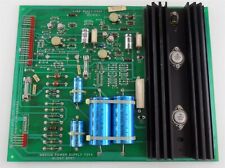
Our bodies are continually replenishing cells by way of cell division, but occasionally things can go awry during this process, giving rise to a mutated cell. Now, researchers at Karolinska Institutet have discovered how genetic information remains intact as cells divide, which may provide scientists with a greater understanding of what goes wrong when cancer occurs.
Everyday, one percent of an adult’s 50,000 billion cells die and are replaced through cell division. For this to occur with the cells still intact and growing normally, the genetic information found in DNA molecules must be accurately copied and transferred to the new cells. To ensure that the correct genetic information is passed on, any damage sustained by the DNA must first be repaired. “A cancer cell often has chromosomal aberrations that can be linked to erroneous copying, separation, or repair of the DNA molecule,” says lead researcher Camilla Sjögren.
Sjögren says that both the distribution and repair of chromosomes is related to three different protein complexes. “Quite a bit is known about two of these complexes. One of them, cohesin, keeps the DNA copies together such that they do not separate too early; while the other, condensin, makes the chromosomes more compact, making the separation easier”, explains Sjögren. But so far little has been known about the third protein complex, known as the Smc5/6 complex.
Sjögren’s team found that Smc5/6 bound to locations along a DNA strand that they had intentionally damaged for the purposes of their experiment. The team says that their findings suggest that Smc5/6 is not only implicated in the repair process, but is also necessary to disentangle undamaged chromosomes prior to cell division. “Evidence points to… the Smc5/6 complex [working] in two different pathways, one needed for repair and the other for untangling,” said Sjögren.
Chromosomes become tangled as a natural part of the DNA copying process, but if the chromosomes remain tangled they can’t be separated and are instead sent to the 2 emerging daughter cells. The team says that Smc5/6 resolves both tangles and the repair process at the DNA level, but adds that the two processes are regulated quite differently. “We now aim to study how this works on a molecular level. This will bring us one step closer to the general goal – a summary of the many mechanisms that collaborate to maintain our genetic stability,” says Sjögren.


















Comments are closed.